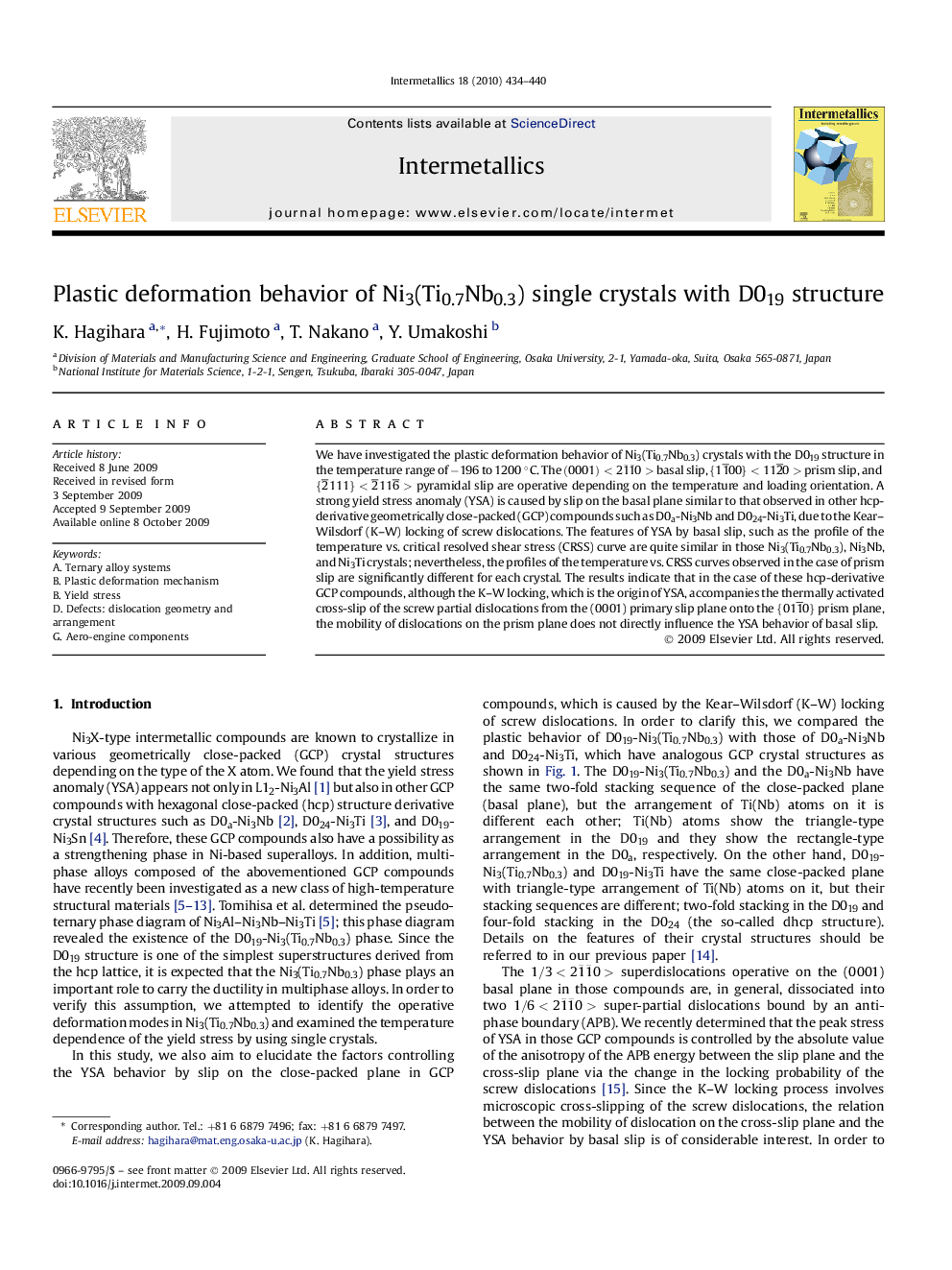| Article ID | Journal | Published Year | Pages | File Type |
|---|---|---|---|---|
| 1601160 | Intermetallics | 2010 | 7 Pages |
We have investigated the plastic deformation behavior of Ni3(Ti0.7Nb0.3) crystals with the D019 structure in the temperature range of −196 to 1200 °C. The (0001)<21¯1¯0> basal slip, {11¯00}<112¯0> prism slip, and {2¯111}<2¯116¯> pyramidal slip are operative depending on the temperature and loading orientation. A strong yield stress anomaly (YSA) is caused by slip on the basal plane similar to that observed in other hcp-derivative geometrically close-packed (GCP) compounds such as D0a-Ni3Nb and D024-Ni3Ti, due to the Kear–Wilsdorf (K–W) locking of screw dislocations. The features of YSA by basal slip, such as the profile of the temperature vs. critical resolved shear stress (CRSS) curve are quite similar in those Ni3(Ti0.7Nb0.3), Ni3Nb, and Ni3Ti crystals; nevertheless, the profiles of the temperature vs. CRSS curves observed in the case of prism slip are significantly different for each crystal. The results indicate that in the case of these hcp-derivative GCP compounds, although the K–W locking, which is the origin of YSA, accompanies the thermally activated cross-slip of the screw partial dislocations from the (0001) primary slip plane onto the {011¯0} prism plane, the mobility of dislocations on the prism plane does not directly influence the YSA behavior of basal slip.
